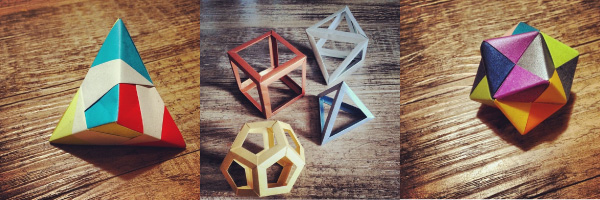
The author. Origamist, Bobby Ruiz.
By Bobby Ruiz
A skill, like a good blade, must be sharpened both at its formation and throughout its use. As an origamist (among other things), I had a most interesting start to this venerable paper art. Whenever I would work somewhere people could see me, they often approach me and watch in awe as I fold the paper into all manner of shape, form, and construction. What they don’t know is how ridiculously terribad I was when I first began. Terribad, I tell you.
It was through absolute serendipity that origami and I met. I was just another six-year-old turning his Lego blocks into structures of indeterminate persuasion and drawing the best Pokémon fanart ever conceived on Microsoft Paint. One day, I chanced upon this stroller bag filled with all sorts of origami books and construction paper. I never asked for it, so I surmised that it probably belonged to my eldest brother, who happens to be a dilettante. I tried one diagram, and after that I was hooked.

Consistent with my vast knowledge of ‘architecture’ and ‘painting’ back then, I had all the best techniques and materials: I used the cheapest pad paper, I tore the paper into not-quite-squares by driving a pencil between the sheet and the gap of the floorboards, folded with just about as much accuracy as trying to shoot a black olive off a toothpick in the night with a shotgun, and even if I followed instructions, I didn’t always understand what I was doing—especially whenever the instructions were written in some other language, like Japanese or Klingon. As I got better, I stopped using pencils for things they weren’t meant for, and started tearing actual squares by hand. Problem was, the edge formed through tearing was always frayed. My papers would remain this way until I would discover that humanity already invented the cutter, and it was perfect for this purpose. My folding skill would be refined as I made more and more of anything and everything. Precision and accuracy is now just second nature. Reading instructions would become easier until I reach the point that the only language I need to understand is the language of the diagram itself. But of course, before I got to this level of competence, I had to give life to rainbows upon rainbows of ugly.
Now, it’s the biggest preoccupation I have. Considering the fact that I’m one of the most OCD-afflicted people I know, I have a measurement tolerance of 0.05 mm—for you uncouth barbarians out there, that’s 0.001968504 inches—for cutting and folding paper. Any larger is like putting an elephant in a room and hoping no one notices. For origami, I demand nothing short of the best. Aside from that, I have absolutely no conception of ‘a proper time and a proper place’ for origami. I have folded during classes both interesting and useless, in smoke- and poser-filled nightclubs, in public johns, and even during somebody’s wake. Suffice to say, it’s my passion.
If there’s anything to be learned from this exciting account of my own ‘growing pains’ as an origamist, it is this: everyone sucks at the start. No one ever got things consistently right from the get-go. Barring stuff like death or dismemberment, there is no excuse for saying that you can’t learn how to do something—not especially origami.
Bobby Ruiz is a ‘freelance crafter’ and a self-professed polymath. He graduated from Ateneo de Manila University in 2013 with a degree in European Studies. Feeling dissatisfied with the job options from his course, he instead chose to focus his time working on what he loves doing best: making things on his own. Ever since childhood, he’s had a particular interest in origami. Its versatility, coupled with how beautiful finished works come out, has captivated him for most of his life. He is also interested in recreational mathematics, science, technology, as well as other crafting disciplines such as tile design and technical drafting. You can check out his work on his Facebook Page, or Instagram. He’s also got an upcoming workshop this Saturday–check out the details here.
